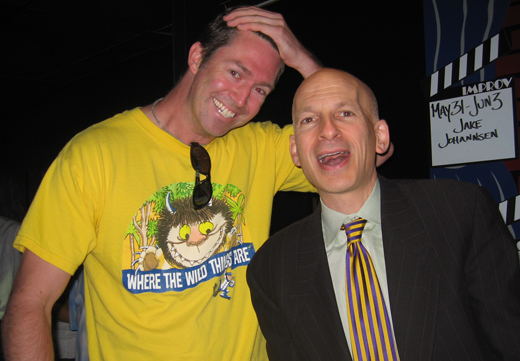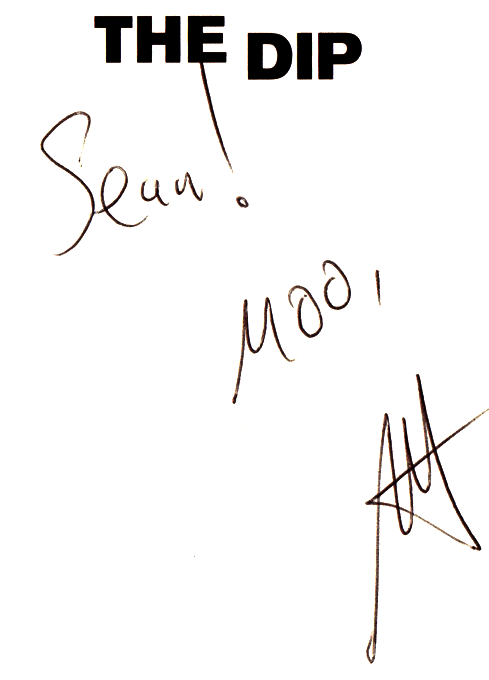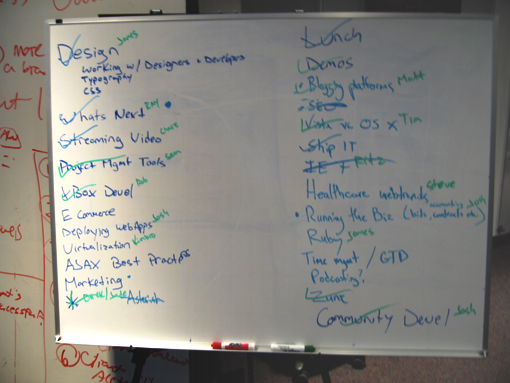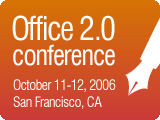Between attending OSCON in Portland last week, doing the TechCrunch demo pod at the party on Friday in SF and doing our production release and launching sales for JumpBox, it’s been a whirlwind the past few weeks. Here’s a recap some of the highlights:
1.0 Launch Madness
It was a crazy scramble right up until we left for Portland. Not only were we changing our corporate identity, building the online store and payment gateway, porting our site over from WordPress to Drupal, revving the applications to their latest versions, and putting the finishing polish on the JumpBox platform itself but we were also prepping for our presence at the conference and TechCrunch party getting new shirts/biz cards/DVD’s made. It was a stressful week leading up to OSCON but we launched sales officially last Tuesday and saw a record day for downloads. Sales velocity has been improving slowly and we’re putting better and better metrics in place as we go to confirm/refute hypotheses about what is working well and where the bottlenecks are. One of the sessions at OSCON was titled “How to change your tires at 100mph” and I feel to some extent that’s us right now- we’re now finally on the racetrack and we’re converting our yugo into a formula one as we drive. True to 37 signals form of “it’s not a problem until it’s a problem“, we deferred the aspects of the system that didn’t need to work immediately. All in all, we’re happy with the progress of things and as we anticipated, the pace of learning has accelerated greatly now that we have customers and a better idea of our conversions.
Portland and mass transit
We were in Portland for OSCON last week and that was my first time in that city. The weather was a treat after our 117deg days here in Phoenix. The feature that stood out most about their city is that they have mass transit absolutely nailed. Trains and buses are everywhere and come frequently and a good number of people seemed to ride them. Phoenix has been torn up the past year as they build our light rail. I hate to be pessimistic but frankly, I don’t see it working in Phx. Waiting in the heat would be enough to deter most travelers from using it, but they also traverse the first and last mile to the train stops somehow. Rail is a transportation medium that is hugely subject to network effects (ie. the first train is marginally valuable, the second makes it significantly more valuable and a grid of trains running makes it extremely valuable)- one rail stretched across the city is only mildly useful unless it integrates well with the bus system. If it’s going to see adoption at all in Phoenix, they’ll need to solve the cooling issue at the stop and last mile issue. The fact they chose to route it around Sky Harbor airport so they could continue to bill $20/day for parking makes the program pretty irritating. Provided they can fix the cooling issue at the stops and make it work, we’ll see an industry of smart car rentals (or an equivalent short-hop transportation option) spring up around the light rall stations and that should be an interesting opportunity for someone.
OSCON
The open source conference was well-attended. I heard the figure of 2500 attendees and that seemed about right. I didn’t know what to expect about what the audience make up would be like- it was heavily slanted towards developers. We did informal counts of Mac v. PC laptops at the couches and meeting areas and noticed that Mac has clearly overtaken PC in the developer community. I attended sessions on foundations of OSS, law as it relates to OSS, jabber, subversion, Trac, how Youtube scaled to meet their insane growth, the Art of Community, promoting an open source project, myths of innovation and lessons in usability. The innovation seminar was probably the most interesting- the guy was author of this book and was a great speaker. I realize the developer-level stuff is now officially way over my head and I’m relegated to the ranks of normal end user. We met with some cool people at the conference and saw an awesome duo guitar performance at the Intel booth on the last day. I’m actually happy we didn’t end up doing a booth there, however. It’s just the wrong venue to promote JumpBox.
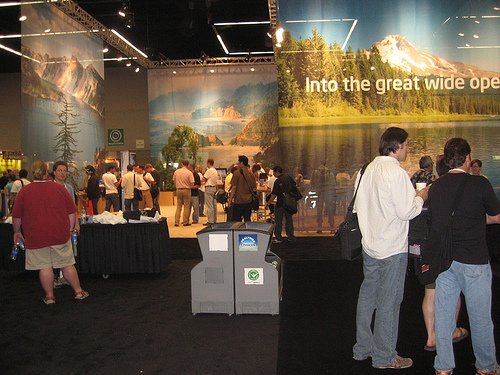
The intel booth was impressive.
TechCrunch
We did a product level sponsorship at the now-famous TechCrunch annual party hosted by August Capital. There was apparently all kinds of drama surrounding this girl and she was certainly quick to hop in our photo (check the Sandra Bullock resemblance):
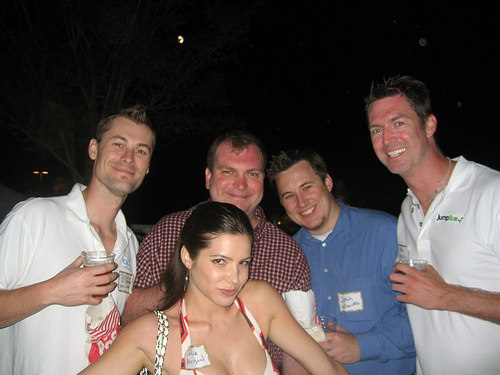
It was good seeing our friend Shanti Braford (red checkered shirt) who recently left Phoenix to be in the tech mix up in SF. And big thanks to Josh Strebel (left) for saving our ass and running errands for us while we were stuck in Portland after Alaskan Airlines canceled our flight. The other guy in the picture above is our AZ friend Josh Knowles (blue shirt) who also came to party with us.
Books
I’ve had a chance to finally read a bit now that we’ve launched. I’ll try and writeup individual posts with the takeaways for each book but here’s the gist:
Movies
Bands
Between catching some random shows, Last.FM and friend recommendations, there’s a ton of great music I’ve discovered recently.
Podcasts
So Close
Lastly, I placed 2nd in the last Ideawarz tournament on Cambrian House. I should be happy with that standing given that there were 50 entrants but I’m bummed about the idea that won. It was essentially a rehash of the CH concept itself and though it’s a noble cause that I support, it’s not nearly as interesting (or feasible) as the AdSqueeze concept. I’m realizing more and more that the ideas that consistently do well on there are something like “Solve world hunger via crowdsourcing.” They propose vague, honorable goals but no realistic means to achieve them; tacking on the crowdsourcing adjective almost invariably secures you a slot in the top three. I’m concerned about the future of CH and that they’re encountering the same fatal flaw that killed Grid7 labs: people who are paid solely in equity who are not truly on the hook to deliver in the end will fail to do so. I feel like they’re getting spun out on their engine/processes instead of ensuring they produce a few successes. I do have a recommendation for them on what they need to change at this point and I’ll write that up soon. I know they’ve had some cuts lately and are down to around 25 people – I genuinely like this company though and I really want to see the co-op concept made to work. They basically need to incorporate the concept of microfinance into their model to infuse real cash into the system (however small) and get the accountability hook of real money changing hands to work for each project. Make it a place where anyone with disposable income can go to back risky ideas that can be tested quickly with minute amounts of cash.
Anyways, that’s the haps on the craps and bring you up to speed on what’s been happening here this summer. We’re hiring for a QA position, a contract graphic designer position and a Ruby on Rails rockstar for JumpBox. Contact me if you fit the bill or know anyone who does.

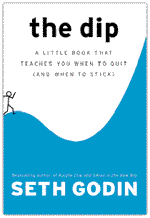 In every good sense of the word that is: he’s quit all the right things. I had the opportunity to see him speak in front of a group of about 300 this morning at the Tempe Improv in Arizona. His talk was themed around his latest book the dip and dealt with the subject of when it makes sense to quit. My friend Francine wrote up a
In every good sense of the word that is: he’s quit all the right things. I had the opportunity to see him speak in front of a group of about 300 this morning at the Tempe Improv in Arizona. His talk was themed around his latest book the dip and dealt with the subject of when it makes sense to quit. My friend Francine wrote up a 